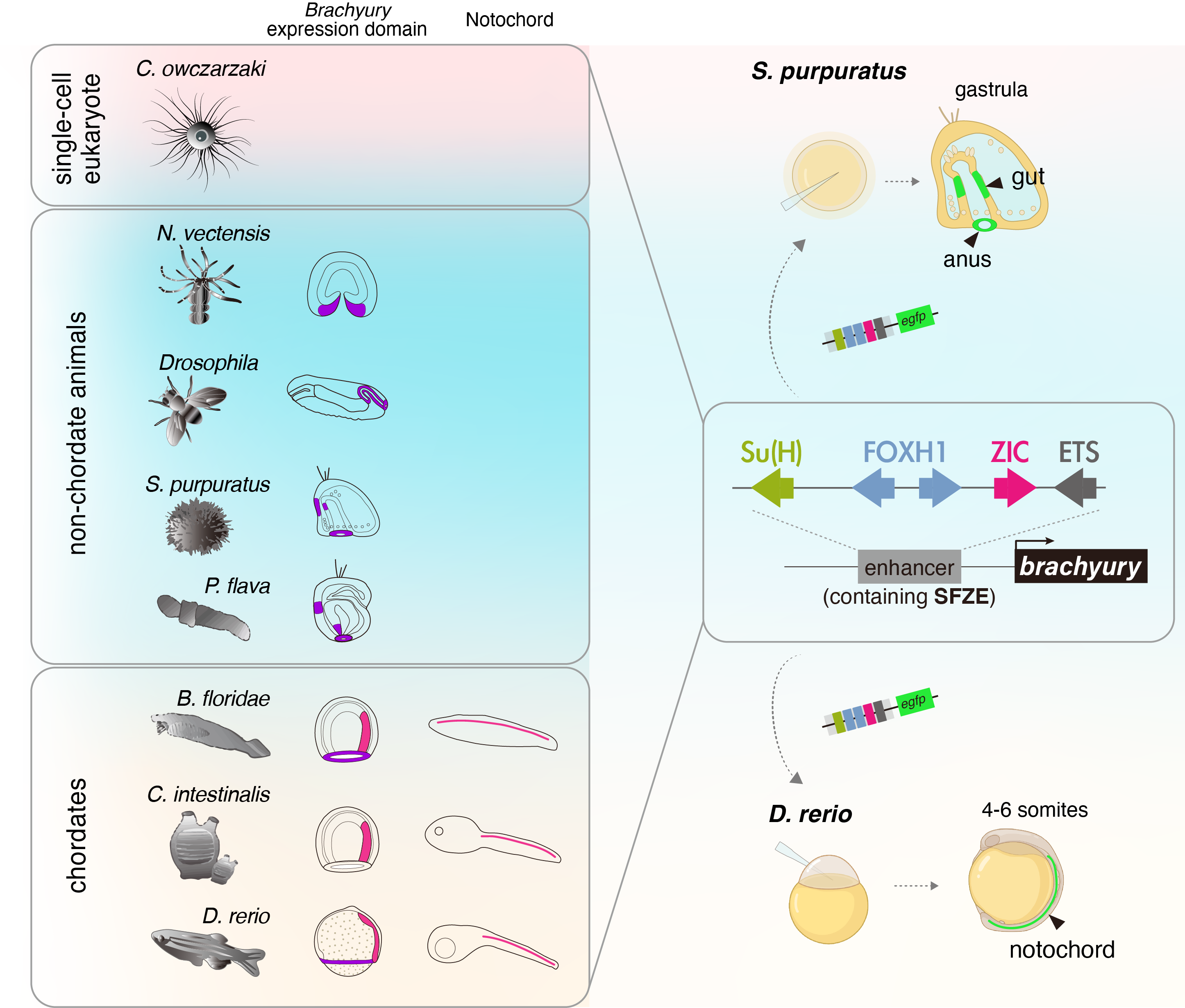Decoding chordate origins: an ancient genetic regulatory code for the emergence of the notochord
- Date:
“Decoding chordate origins: an ancient genetic regulatory code for the emergence of the notochord”@ Science Advances
The notochord is a defining feature of chordates, yet its evolutionary origin remains mysterious. Our group has identified a regulatory syntax that controls the notochordal expression of brachyury, which encodes a transcription factor essential for notochord development. This syntax is composed of binding sites of four transcription factors in a specific arrangement and is deeply conserved in diverse animals and even in a unicellular relative to animals. In chordates, it has been rewired to respond to different upstream signals, facilitating the origin of the notochord. This study reveals that during animal evolution, regulatory elements can be preserved in a specific code and repurposed for novel functions.
This study was published in July 2025 in Science Advances (IF: 12.5). The first author is Tzu-Pei Fan from ICOB, with Yi-Hsien Su as the corresponding author. The research team includes Jr-Kai Yu, Che-Yi Lin, Yi-Chih Chen, Jun-Ru Lee, and collaborators Ann Cutting and Andy Cameron from California Institute of Technology. This research was supported by Academia Sinica and NSTC.

The left panel shows the single-cell eukaryote and its multicellular relatives (animals) that are classified into non-chordates and chordates. The notochordal expression of brachyury in chordate embryos and the position of notochord in the chordate juveniles are marked in red, while its expression in the mouth, gut, and anus is marked in purple.
The right panel illustrates that a cis-regulatory code (SFZE, consisting of the binding sites of Su(H), FOXH1, ZIC, and ETS in a specific grammar) is identified in enhancers (gray rectangle) of brachyury from various animals and the unicellular eukaryote. The order and orientation of these sites are indicated by colored arrows. The SFZE-containing enhancers activate EGFP expression in zebrafish notochord and in the gut and anus of sea urchin embryos.